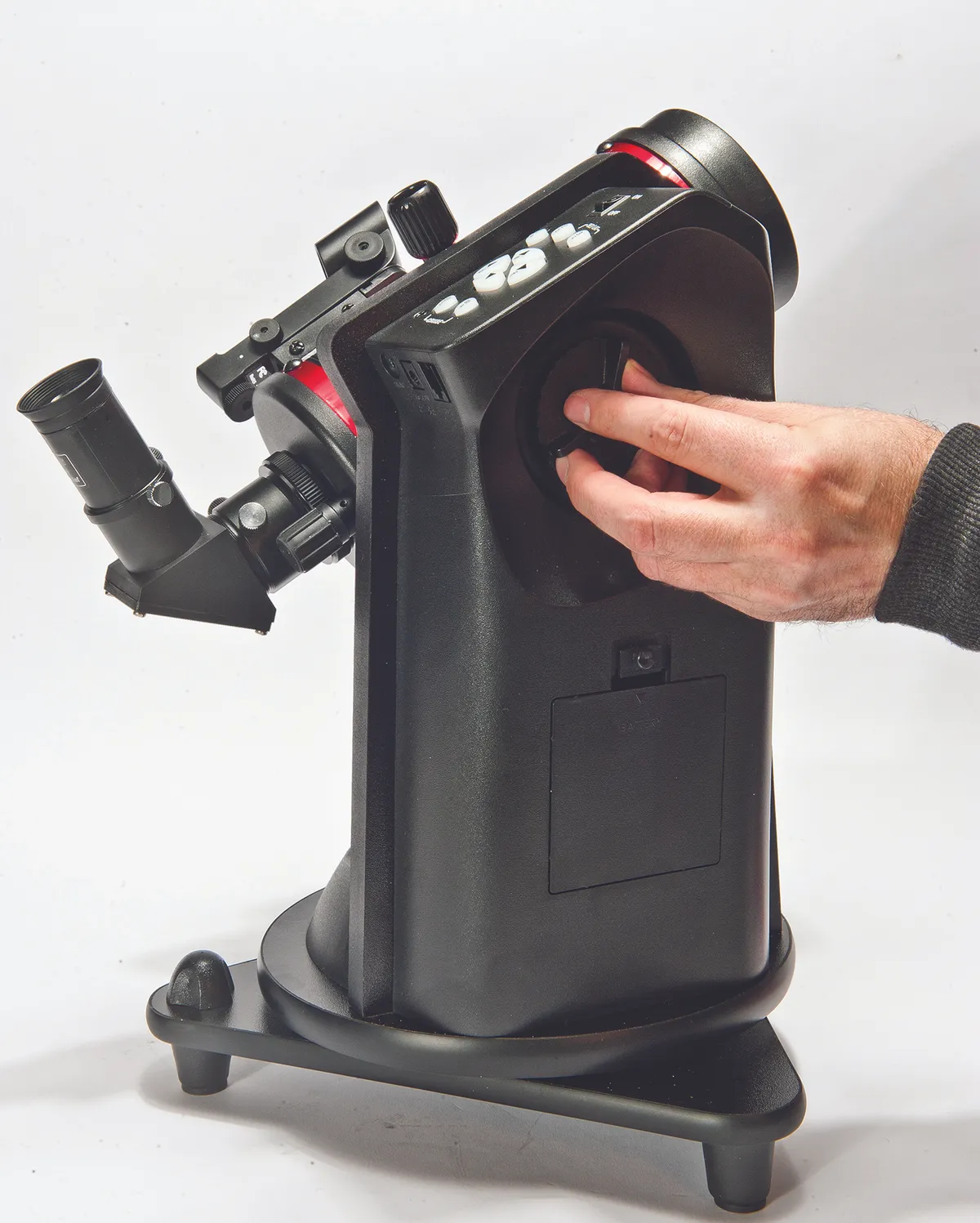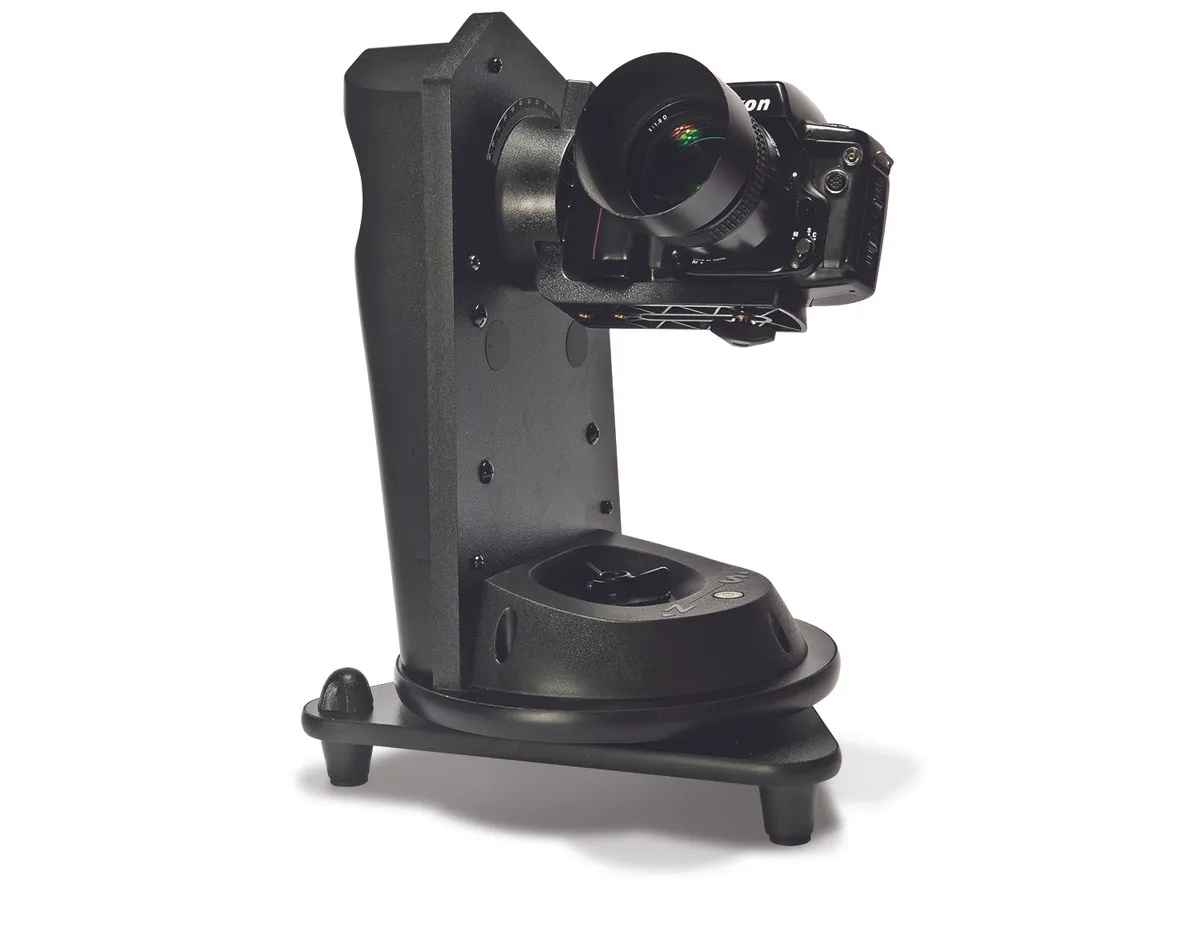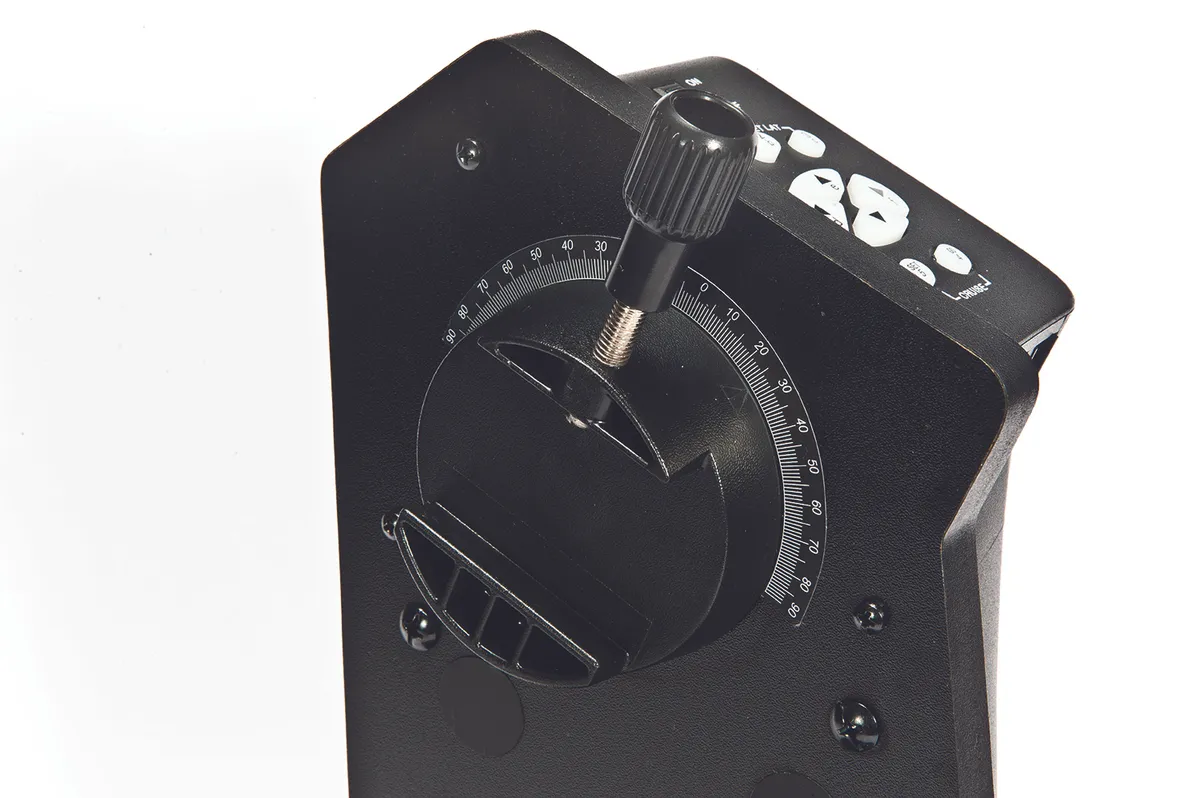Many new telescope owners soon realise that setting up and storing a scope and all the associated paraphernalia is not necessarily straightforward. Thankfully, not all instruments fall into this category: the Sky-Watcher Heritage-90 Virtuosois all about simplicity and portability.
Its maintenance-free 3.5-inch Maksutov-Cassegrain telescope is complemented by a minimalistic altaz table-top mount. All you need to get going is a power supply and a suitable table to put it on.
The whole setup can be stored fully assembled and ready to use, and is so compact it can be kept almost anywhere.
On studying the manual, we were surprised to find that while it covered the mount’s operation in detail, there were no instructions for setting up and using the telescope itself. For a scope particularly suited to beginners, this is an unfortunate oversight.
We struggled to set the latitude because the instructions for the mount were not particularly clear, but we managed to get it tracking correctly eventually.
We slewed to Jupiter and centred it in the included 25mm eyepiece, giving 50x magnification. The scope showed the gas giant’s bands and the four Galilean moons.
To get a closer look, we switched to the other supplied eyepiece, a 10mm, increasing the magnification to 125x.
We found it difficult to snap to a clear focus as the movement was quite coarse and the focus knob rather small, but it became easier with practice.
The scope is factory collimated and non-adjustable, but assuming the telescope doesn’t suffer any serious knocks, the optics should retain alignment.
Find the Sky-Watcher Heritage-90 Virtuosois and other similar telescopes in our list of the best telescopes for kids.

Table-top tour
We noticed that although the tracking was helping to keep Jupiter in the field of view, over a few minutes it drifted out and we had to re-centre it.
Tracking is set to stop automatically after 30 minutes, which can be inconvenient if you want to take a break and come back to an object.
Using the keypad to change speed settings and slew the scope was straightforward and soon became second nature.
At the highest slew speed, the mount was reasonably quiet, so your neighbours should sleep soundly when you stay up into the small hours.
As a bonus, the mount has a port for a SynScan AZ handset, giving you the option to turn this into a full Go-To mount.
Next we slewed to the first quarter Moon to explore the craters along the terminator.
Although enjoyable, the view was not quite as sharp as we would have liked, showing minor astigmatism.
The mount tracked reasonably well even though we slewed manually: the dual-encoder technology does its job.
We then centred the Orion Nebula and were treated with a satisfying rendition of this famous view – swirling nebulosity surrounded the four stars in the trapezium at the nebula’s core – showing what this telescope’s modest aperture is capable of.
Unfortunately our fun was cut short when the front lens began to frost up.

This is because the lens is very close to the front end of the scope, so it is completely exposed. Sky-Watcher could have remedied this by including a detachable dew shield.
The mount itself is built from substantial laminated chipboard. It is very sturdy, but needs to be stored in a dry environment to prevent water damage.
The mount has several extra astrophotography and video recording features. For example, it can choreograph panoramic shots, so you can photograph a wide landscape with multiple panes, or it can pan gradually through up to six programmable positions.
We had to study the manual carefully to set these up, but they worked well in general.
None of these features is really relevant to astronomers and, as it is an altaz mount, it is not suitable for long-exposure imaging, but no doubt some will find these extras useful.
Accompanied by more complete instructions or a knowledgeable friend, the Heritage-90 Virtuoso would make a good first scope for a budding astronomer.
Its simple operation makes for a gentle learning curve, and its 3.5-inch aperture is sufficient to reveal a wealth of detail within the Solar System and beyond.
Simplicity itself
Simplicity is the key with this table-top altaz mount and anyone looking for a first scope will appreciate this.
No faffing with extending tripod legs – just place it on a table small enough that you can get to the scope from every side.
Aligning it couldn’t be simpler: if you are in the northern hemisphere, just point it at Polaris then turn it on.
To point the scope, all you do is loosen the axis clutches and swivel the scope in altitude (up and down) or azimuth (left to right) to where you want the scope to point, then re-tighten; the mount automatically starts tracking.You can then fine-tune the position with the keypad.
The axis clutches have generous grips, so they are easy to use with gloves on, and the swivelling movement is smooth and easy to control.
You need to level each time you set up, but a circular spirit level and the threaded levelling feet make this a simple process.

Keypad
Just nine buttons control all of the mount’s functions and settings. At first you will need to refer to the instructions regularly for the key combinations, but for the basic functions this is quick to master. The chunky buttons are backlit and easy to use while wearing gloves.
Vixen dovetail saddle
The mount possesses a standard Vixen dovetail saddle to hold the scope. This is a versatile fitting, which means you could also use the mount for binoculars or a short refractor. It was easy to adjust the scope’s balance thanks to the secure thumbscrew.
SynScan port
The mount automatically tracks objects, but it can be upgraded to a full Go-To by connecting a SynScan AZ hand controller. With this attached, the mount will be able to automatically point at any of 40,000-plus objects in its database or take you on a tour of the best objects in the night sky.
Red-dot finder
The finder projects a red dot onto a glass screen, making it appear as if the dot is superimposed on the night sky. Once aligned, this is a very intuitive tool for placing objects in the field of view and is surprisingly reliable. Just remember to switch it off after use to avoid wearing down the battery.
Camera mount
A camera can be attached to the mount using the supplied bracket, which will support a lightweight DSLR setup. The mount also offers some nifty user- programmable photography functions and automatically triggers the camera shutter via a SNAP port.
Vital stats
- Price £199
- Optics Maksutov-Cassegrain
- Aperture 3.5 inches
- Focal length 1,250mm (f/13.9)
- Finderscope Red-dot
- Mount Tracking altaz
- Eyepieces 10mm and 25mm, 1.25-inch fit
- Extras 90° mirror diagonal, camera bracket, shutter release cable for Canon DSLRs
- Weight 5.1kg
- Supplier Optical Vision
- Tel 01359 244200
- www.opticalvision.co.uk
This review originally appeared in the May 2013 issue of BBC Sky at Night Magazine.